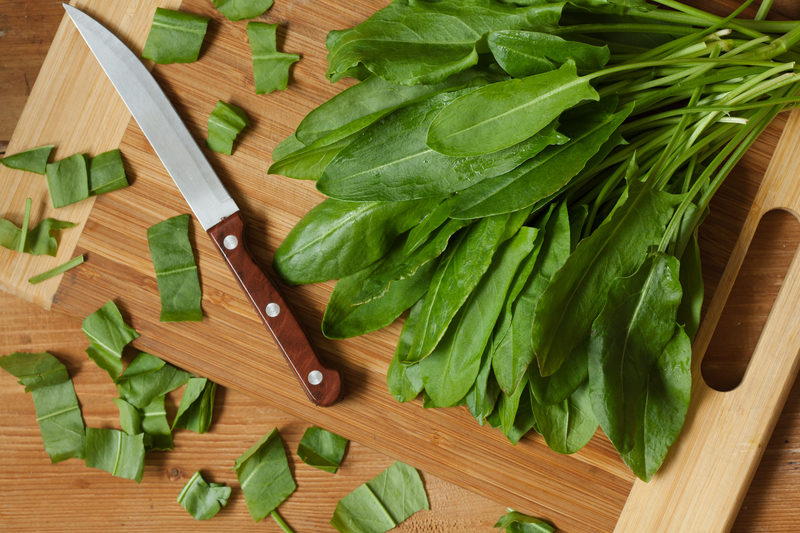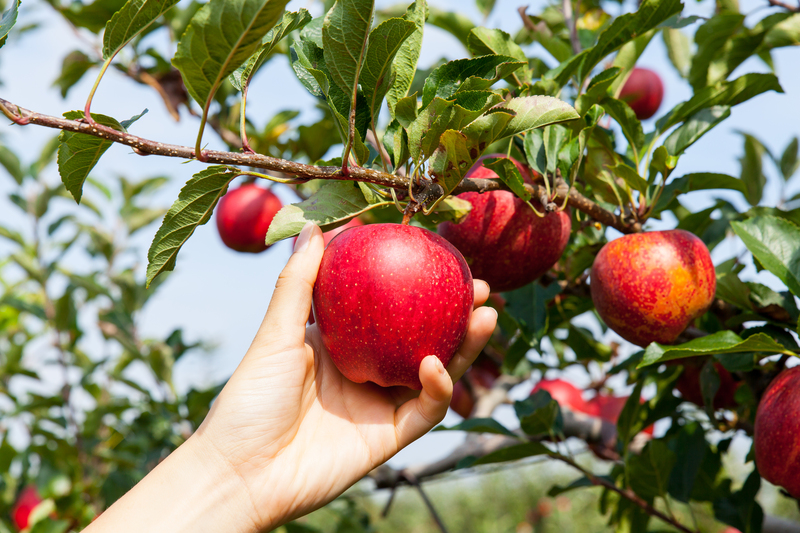Creating the Ultimate Child-Friendly Garden Experience
Posted on 21/06/2025
Creating the Ultimate Child-Friendly Garden Experience
Gardens are magical places, and designing a child-friendly garden can open a world of adventure, learning, and creativity for kids of all ages. If you're looking to transform your outdoor space into a haven for your children, this comprehensive guide outlines everything you need for creating the ultimate child-friendly garden experience.

Why Build a Child-Friendly Garden?
A kid-safe garden does much more than provide a play area. It encourages imagination, physical activity, social development, and environmental awareness. Children learn by exploring and engaging with nature, so a thoughtfully designed backyard can become an outdoor classroom and a cherished family space.
- Physical Wellbeing: Open spaces encourage movement, balance, and coordination.
- Emotional Growth: Nature relaxes and inspires, providing mindfulness and a sense of achievement.
- Curiosity and Learning: From planting seeds to observing wildlife, gardens are full of educational opportunities.
Key Elements of the Ultimate Child-Friendly Garden
Building a safe and fun children's garden requires planning, creativity, and an understanding of what children enjoy. Here are the fundamental features to include for the best child-focused outdoor experience.
1. Safety First: Ensuring a Secure Environment
- Fencing: Install secure, child-proof fences and gates to prevent children from wandering off.
- Non-Toxic Plants: Choose plants that are safe for children and avoid those with thorns, toxic berries, or sap.
- Soft Surfaces: Use grass, bark chips, or rubber mulch to cushion falls and create gentle ground cover.
- Tool Storage: Keep gardening tools and chemicals locked away and out of reach.
- Clear Pathways: Maintain walkways that are wide, even, and free of trip hazards.
A safe garden for kids is the foundation of a happy outdoor space. Thoroughly inspect your garden from a child's perspective and regularly maintain all safety features.
2. Inspirational Play Zones
To truly craft the ideal kid-friendly garden, create zones that spark play, adventure, and creative exploration.
- Play Structures: Consider swings, slides, climbing frames, or even a treehouse. Ensure all equipment is age-appropriate and securely installed.
- Sand and Water Areas: Encourage sensory play by setting up sandpits, mud kitchens, or a small splash pool. These zones foster motor skills and creative thinking.
- Secret Spaces: Hideaways such as tipis, willow tunnels, or dens can spark imagination and provide a retreat for quiet moments.
- Art Corners: Set up easels, chalkboards, or pebbles for painting. Outdoor artistry encourages self-expression and leaves no mess indoors!
3. Engaging Learning Opportunities
Gardens can nurture a love of nature and science. Include interactive features that allow your child to discover, experiment, and grow.
- Vegetable and Fruit Patches: Let kids have their own mini-garden to plant, weed, and harvest. Growing food encourages responsibility and healthy eating.
- Wildlife Habitats: Install bird feeders, bug hotels, or butterfly gardens to attract local fauna and teach children about ecosystems.
- Composting Stations: Involve children in recycling organic waste and learning about decomposition and sustainability.
- Sensory Gardens: Plant a variety of textures, colors, and scents--think lamb's ear, sunflowers, lavender, and herbs.
- Weather Stations: Set up simple tools for kids to measure rain, wind, and temperature, and keep a weather diary.
4. Comfortable Family Spaces
A child-centered garden should welcome the whole family. Design areas where everyone can relax, play, and connect.
- Shaded Seating: Set up benches, hammocks, or picnic tables under trees or with parasols for outdoor meals and downtime.
- Patios and Decks: Provide solid, slip-resistant surfaces for games, barbecues, and family gatherings.
- Firepit or Story Circle: Build a safe zone for evening storytelling, roasting marshmallows, or stargazing.
Design Tips for a Fun and Practical Child-Friendly Garden
Planning is key to balancing fun, beauty, and practicality. Use these design principles to craft the perfect family garden:
- Age-Appropriate Features: Design areas that grow with your child--from toddler-safe corners to teen chill-out zones.
- Visibility: Place play equipment where you can supervise from indoors or main seating areas.
- Flexible Spaces: Choose movable features so you can easily adapt your children's outdoor area as interests change.
- Mix of Wild and Tame: Blend neatly maintained lawns with wildflower patches or log piles to entice exploration without losing order.
- Easy Maintenance: Select durable, low-maintenance materials and drought-tolerant plants to save time and energy.
- Custom Touches: Incorporate your family's favorite themes or hobbies--maybe a pirate ship sandbox or a fairy garden trail!
Best Plants for a Child-Friendly Garden
The right plants make all the difference in an outdoor garden for kids. Pick flowers, trees, and shrubs that are safe, tough, and interactive.
- Sunflowers: Towering, fast-growing, and fantastic for measuring or racing who grows the tallest.
- Lavender and Mint: Scented and sensory, lovely for brushing past or picking.
- Strawberries and Cherry Tomatoes: Edible, easy to grow, and perfect for sneaky snacking!
- Sweet Peas and Nasturtiums: Vibrant flowers that are both pretty and edible.
- Dogwood and Willow: Bendable branches ideal for living dens, tunnels, or weaving projects.
Avoid: Foxglove, oleander, yew, and other poisonous plants. Always double-check your plant list before planting for maximum safety.
Creative Garden Activities for Children
Once your child-friendly backyard is established, keep spirits high with regular interactive and seasonal activities:
- Treasure Hunts: Hide natural objects, clues, or painted rocks around the garden for a quest.
- Mini Beast Safaris: Search for worms, ladybugs, or butterflies and log discoveries in a journal.
- Garden Art: Paint stones, create leaf rubbings, or build nature mobiles from twigs and flowers.
- Picnic Parties: Host tea parties or snack breaks on rugs or under a special "picnic tree."
- Stargazing Nights: Lie on blankets, spot constellations, and talk about the universe.
- Seasonal Growing Projects: Try sunflowers in summer, bulbs in fall, or lettuce in spring.
Maintaining a Safe and Inviting Kids' Garden
To keep your child-safe outdoor space welcoming and hazard-free:
- Inspect play areas regularly for sharp branches, trip hazards, or insect nests.
- Refresh mulch and soft surfaces each season.
- Prune plants to maintain sightlines and control overgrowth.
- Check all equipment for loose bolts, splinters, or damage.
- Update safety (gates, covers, non-slip mats) as your children grow and explore more independently.
Top Mistakes to Avoid in Family Gardens
- Overcrowding: Leave open play areas so kids can run freely.
- Neglecting Shade: Sun protection is essential--add pergolas, shade sails, or mature trees.
- Using Hard Landscaping Only: Stone or brick can be harsh; soften with lawn, decking, or plant borders.
- Ignoring Accessibility: Use wide, level paths for strollers or bikes, and include ramps if needed.
- Unsafe Water Features: Any pond or water tray should be shallow, well-supervised, or covered.
Examples: Inspiring Child-Friendly Garden Designs
The Wild Explorer's Paradise
- Meandering paths with logs and stepping stones
- Mini-forest with a willow den and butterfly garden
- Natural climbing slope with rope ladder and swing
- Hidden fairy doors at the base of tree stumps
The Homegrown Harvest Haven
- Raised beds for vegetables and fruit bushes
- Colorful pots for sensory herbs
- Compost corner with see-through bin for learning
- Easy-access paths for wheelbarrows and watering cans
The Creative Arts Retreat
- Decked area with chalk wall and seating
- Painted pebble trail through flowerbeds
- Loose-part play area with logs, crates, and fabric for building forts

Frequently Asked Questions on Creating a Kid-Friendly Backyard
How do I keep my garden safe for children?
Start by checking for toxic plants, unsafe tools, sharp objects, and unfenced water features. Use non-slip pathways, soft flooring, and maintain clear sightlines for easy supervision.
What are the best play equipment pieces for small gardens?
Choose compact items like a sand table, swing seat, or hideaway teepee. For vertical interest, try a wall-mounted chalkboard or a climbing wall. Use foldable or dual-purpose features when space is limited.
How can I include my child in the garden design?
Let your child choose plants, create path layouts with stones or paint, and suggest themes for their play area. Involving them makes your toddler-friendly backyard feel special and imaginative.
What garden plants are best avoided with children?
Generally, avoid any plant labelled poisonous or irritant. Specifically, stay away from foxglove, oleander, yew, castor oil plant, and daffodil bulbs in young children's spaces.
How can I make my garden accessible for all abilities?
Use level, wide paths, sensory plants at different heights, and raised beds. Avoid steps where possible, include ramps, and provide seating at regular intervals.
Conclusion: Make Memories in Your Child-Friendly Garden
Creating the ultimate child-friendly garden experience is about more than safe equipment or pretty flowers--it's about unlocking joy, connection, and lifelong curiosity. By blending creativity, safety, and interaction, you can craft an outdoor family retreat where children learn, play, and thrive all year round.
Whether your space is large or small, a well-designed children's garden boosts physical health, inspires imagination, and creates magical moments you'll treasure forever. Start planning your garden adventure today!

